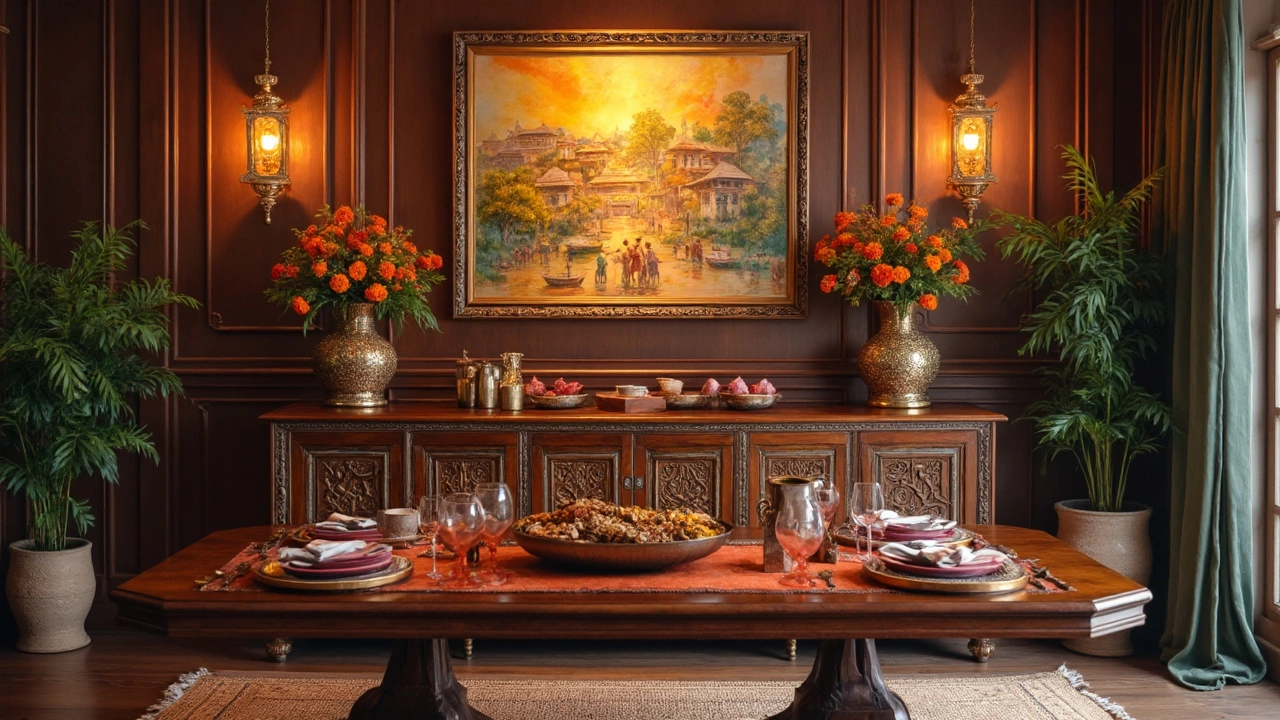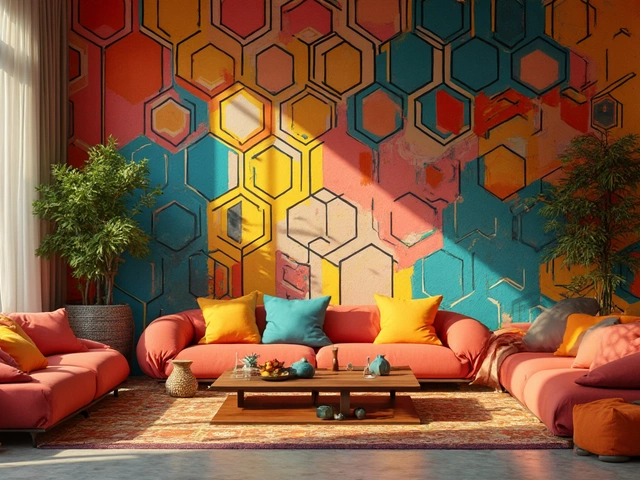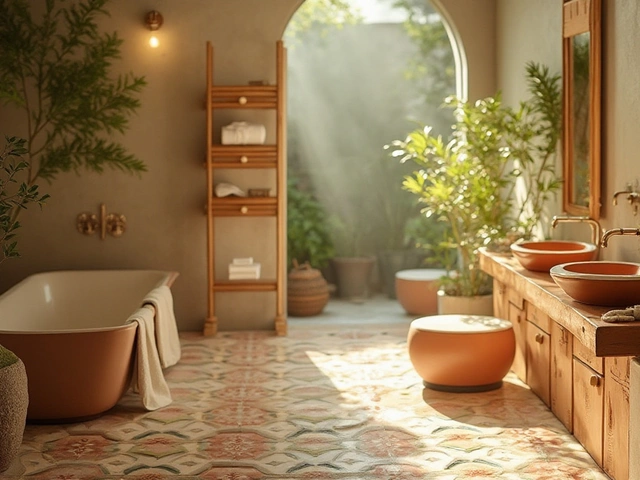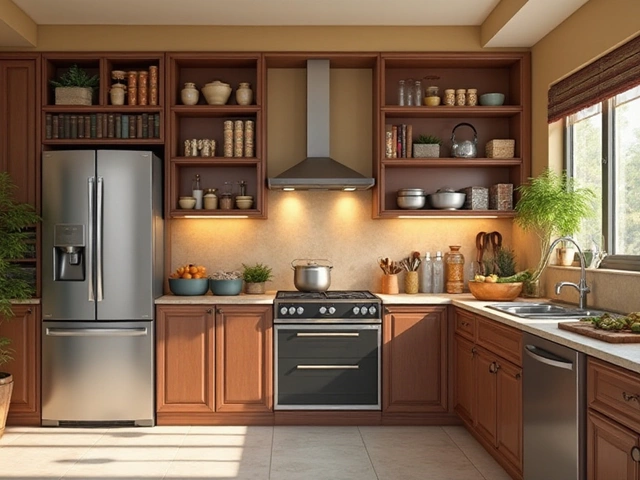When folks talk about dining room furniture, the first things they usually think of are the dining table and chairs. But there's another piece that doesn't always get the spotlight it deserves: the sideboard. It's this versatile wonder that can solve a bunch of your storage and style problems all at once.
If you've never had a sideboard or you're thinking of getting one, imagine having a spot to tuck away your fancy dishes or table linens, with a smooth, flat surface you can use for everything from displaying family photos to serving dishes during a big dinner party. The neat thing about sideboards is how customizable they are—you can find them in all sorts of sizes and styles, so there's likely one to fit just about any space.
A little history lesson: sideboards date back centuries and were originally used to serve food and store dining essentials right in the dining room. These days, they suit modern lifestyles while still holding onto that practical charm. So, if you're looking to up your dining room game, don't overlook this unsung household hero.
- What is a Sideboard?
- The History of Sideboards
- Sideboard vs. Buffet: What's the Difference?
- Decorating Tips with Sideboards
- Maintenance and Care for Your Sideboard
What is a Sideboard?
A sideboard is like the silent workhorse of the dining room. It's usually a long, low piece of furniture, which provides both storage space and a surface to display or serve items. Unlike the dining table or chairs, sideboards aren’t just about seating or dining; they're all about functionality and style.
Key Features of a Sideboard
Sideboards come in various designs and can feature drawers, cabinets, or sometimes both. This mixture allows you to store cutlery, tableware, or even miscellaneous dining essentials conveniently. The upper surface is ideal for laying out dishes during a dinner, holding decorative items, or even serving as a drinks station during parties.
Distinguishing Between Sideboard and Buffet
The terms sideboard and buffet are often used interchangeably, but they have some distinct differences. A sideboard typically has shorter legs, making it appear more grounded and giving it a sturdier presence in the room. A buffet, on the other hand, often comes with taller legs, generally making it appear less bulky.
Why Consider a Sideboard?
- Storage: Offers ample space for keeping dining essentials out of sight but within easy reach.
- Style: Adds an aesthetic appeal to your dining room, serving as a platform for family photos or curious collectibles.
- Versatility: Works well in hallways or living rooms if you decide to shuffle things around later.
If you're decorating or upgrading your dining room, a sideboard can offer both practical benefits and lift the space’s whole vibe. It's worth checking out, even just for the extra storage capabilities alone.
The History of Sideboards
Let's take a trip back in time to discover where these nifty pieces of dining room furniture came from. The sideboard has been hanging around our homes for centuries, and it all started in the Middle Ages. Back then, things like sideboards, or ‘buffets’ as they were sometimes called, were mainly about functionality. People used simple wooden boards set on trestles to lay out food.
Fast forward to the 18th century, that's when sideboards got an upgrade and became more refined. Craftsmen started designing them as standalone pieces, complete with drawers and cupboards. The purpose was still practical—mostly storage for silverware and dishes. By adding these storage features, they began to emerge as an essential part of the dining room furniture collection.
Victorian Era and Ornate Designs
The Victorian era saw sideboards taking center stage in many dining rooms, especially in England. These were not just useful; they were showpieces. Made from rich woods like mahogany and walnut, they featured intricate carvings and luxury finishes. They became a sign of wealth and taste, a way for homeowners to impress their guests with both their taste and means.
By the 20th century, changes in lifestyle and home design shifted the role of sideboards. Houses started leaning towards modern simplicity, which transformed the sideboard into a functional yet minimalistic piece. But no matter the style, they've consistently been a staple in dining areas.
Whether ornate or simple, today's sideboards remain versatile, offering loads of storage while giving your dining area a dash of elegance and order. As homes continue to evolve, the sideboard still holds strong, adapting to our changing needs.
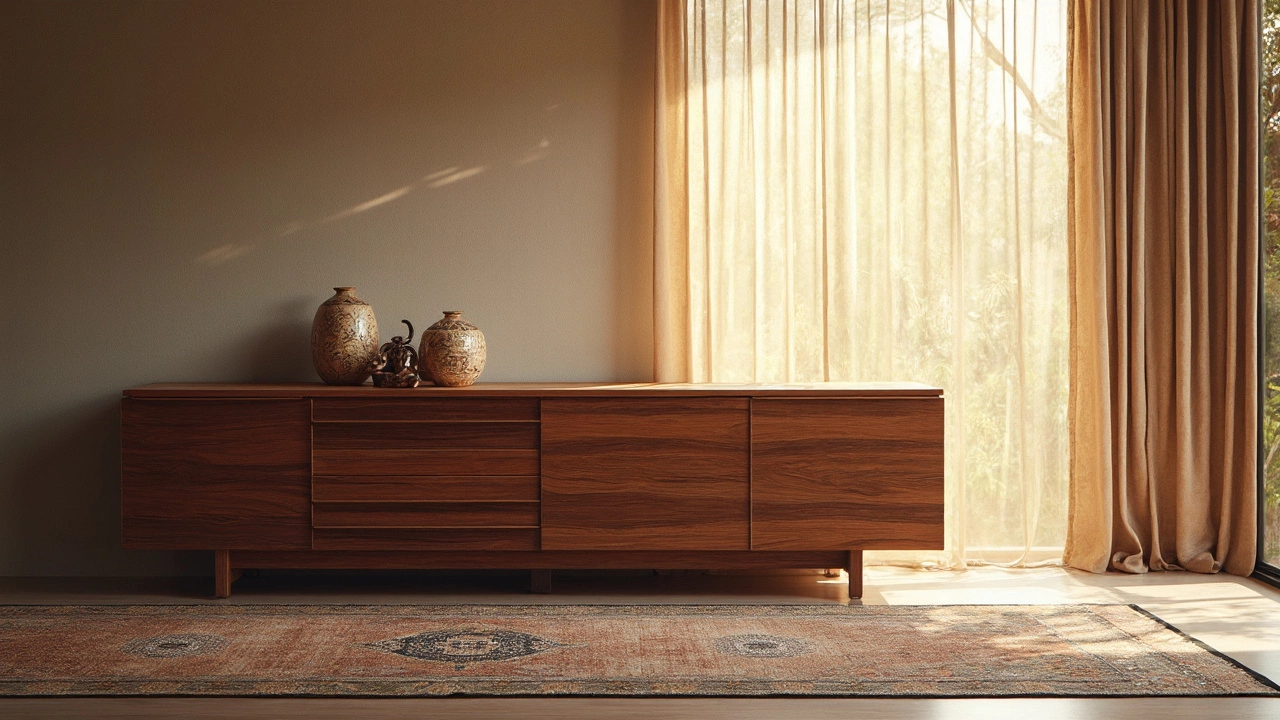
Sideboard vs. Buffet: What's the Difference?
It's funny how folks often confuse a sideboard and a buffet. At first glance, they seem like twins, but you'll find some differences when you take a closer peek.
Location and Functionality
Traditionally, sideboards are more of a dining room piece, offering a spot to stash things like flatware, dishes, or even board games—the essentials of dining and entertainment. They usually have longer legs and are designed to complement your dining room furniture.
Buffets, on the other hand, have their origins rooted in serving food, often having a longer countertop for that very purpose. You'll usually spot buffets in a kitchen or a larger dining area, where they're perfectly placed for laying out a spread. They tend to have shorter legs, giving them a more solid appearance.
Design Elements
When it comes to design, sideboards can be more ornate, adjusting well to both modern and classic styles. Buffets might be a bit chunkier, often built to withstand the buzz of busy kitchens.
Here's a quick visual:
| Feature | Sideboard | Buffet |
|---|---|---|
| Typical Placement | Dining Room | Kitchen/Dining Area |
| Leg Design | Longer Legs | Shorter Legs |
| Purpose | Storage of Dining Essentials | Serving and Storage |
| Style | Varies From Ornate to Modern | Often More Solid and Practical |
At the end of the day, the choice between a sideboard and a buffet boils down to your space and what fits your needs best. Both pieces can bring a world of function and flair to your dining area, so think about how you want to use them before you decide.
Decorating Tips with Sideboards
Sideboards aren't just about stashing your good tablecloths and nice dishes. They're also a killer way to amp up your dining room's style. Here’s how you can make the most of yours.
Blend Functionality with Aesthetics
First up, remember that a sideboard is there to be useful and to look great. Arrange decorative bowls or vases on top. Maybe you've got a collection of pretty bottles or some quirky art pieces that need a home? The sideboard is perfect for that. This is the heart of decorating because it lets you showcase your tastes while keeping the room tidy.
Choose a Theme
Having a theme doesn't mean being boring or stuffy. It’s more about creating a cohesive look. You might go rustic with some charming wooden elements, or modern with sleek lines and neutral colors. Whatever you choose, your sideboard can tie the whole dining room together.
Layer Your Lighting
Lighting is your best friend here. Place a couple of lamps on either end of your sideboard to create warmth and light without being overwhelming. If you have artwork above the sideboard, consider some subtle spotlighting.
Mix Up Textures
An underrated tip is to play with textures. Think about combining soft plants or fabrics with the smooth surface of the sideboard or adding some metallic accents for a bit of dazzle. Your goal is a harmonious but interesting mix that invites curiosity.
Practical Decorating
An underrated feature of sideboards is their ability to adapt for various functions. Throwing a party? Use it as a drink station! Got family coming over for a holiday? Make it a self-serve dessert bar. Instant versatility!
With some imagination and these simple tricks, your sideboard won't just be a piece of furniture. It'll be a centerpiece of style and utility in your dining room, impressing guests and making your space all the more welcoming.

Maintenance and Care for Your Sideboard
Taking care of your sideboard isn't rocket science, but a little TLC can keep it looking its best for years. The key is to stick to regular cleaning and be mindful of what you place on it. If you've chosen a wood dining room furniture piece, dust and polish it every couple of weeks to keep it from getting grimy. Use a soft cloth and avoid harsh chemicals that might damage the finish.
Regular Cleaning
For routine cleaning, you might start with dusting using a microfiber cloth. If there's a sticky situation (looking at you, breakfast syrup), a damp cloth with a bit of mild soap will do the trick. Make sure to dry the surface right after you’re done, since water can warp wood over time. Most finishes don't mind a bit of vinegar, but test it out first in a hidden area.
"A well-maintained sideboard not only enhances a dining room's aesthetic but also extends its lifespan," says Emily Dickinson of Home Furniture Co.
Handling Scratches and Stains
If your sideboard gets scratched or starts to show water rings (it happens to the best of us), don't panic. For minor scratches, there are touch-up markers that match wood tones. For water rings, you can try this trick: apply a small amount of non-gel toothpaste on a soft cloth, gently rub over the stain, and wipe it clean. Remember to reapply polish afterwards to maintain the shine.
Protecting with Care
Using coasters, placemats, and tablecloths does more than add style. They protect your sideboard from heat, cold, spills, and scratches. Don’t overload the surface; heavy objects can cause dents or bending, especially in older or thinner pieces.
Quick Tips on Material-Specific Care
- Wood: Avoid direct sunlight and extreme temperature changes to prevent fading and warping.
- Metal: For a shiny look, buff with a metal polisher occasionally.
- Glass: Wipe with a glass cleaner for a streak-free finish.
By showing your sideboard a bit of love, it'll continue to be the dining room furniture piece that impresses friends and family, while providing you with trusted storage and service.
